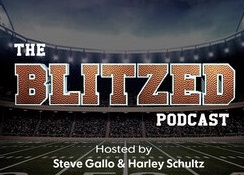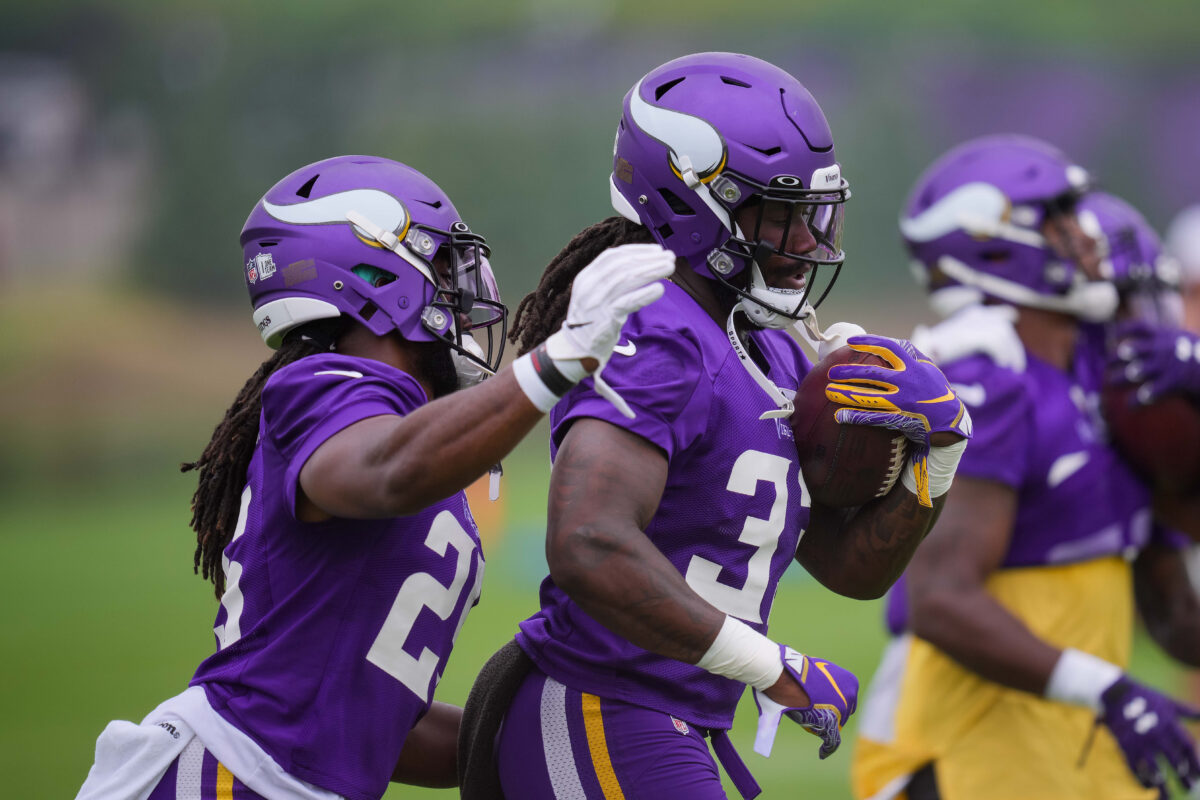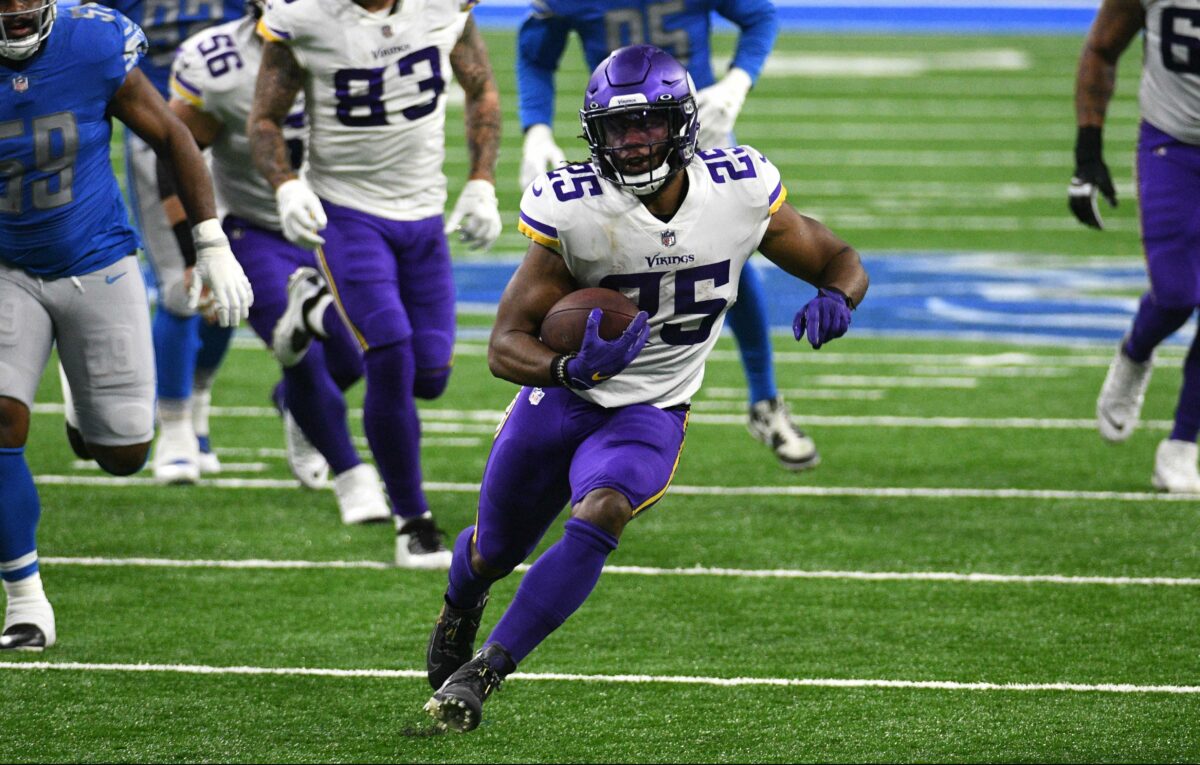For some reason, handcuffing running backs in fantasy football has become a controversial draft strategy throughout the years. On one hand (wrist?), it isn’t sexy, so owners may shy away from a boring selection. Diversification on a roster is another reason why people may avoid it.
Yet, there is nothing but upside in securing the top backup in the correct situation.
Fantasy owners often are drawn to grabbing both backs in precarious backfields, which can get one into trouble. Some offensive situations just don’t warrant a selection, rendering both choices wasted picks.
A noteworthy factor to consider is the profile of the reserve backs in relation to the offensive system. Some teams remain dedicated to a compartmentalized approach. The key is to look for backfields in which the two primary choices are not polar opposites, and/or there isn’t a tertiary guy in the mold of the RB1.
An example of a backfield combo that would work against a gamer would be drafting both Indianapolis Colts running backs Jonathan Taylor and Nyheim Hines. If Taylor were to go down for any period of time, Hines wouldn’t be called upon to handle the full workload. Marlon Mack would assume most of Taylor’s workload and share touches with Hines, who would remain as the primary third-down guy.
Join The Huddle today to get award-winning fantasy football insight
You want to find players whose value drastically increased by way of a substantially larger workload. Rather than being one of <insert your league size here> number of owners fighting on the waiver wire or via blind bidding for the replacement player, adding him late in drafts is a win-win. It does, however, require patience during the season. Owners become tempted to cut said handcuff to create room for another player. This can backfire and needs to be addressed with a case-by-case mentality.
Handcuffing is especially crucial for high-round picks. More often than not, the reason a running back is a selection inside of the first three rounds is due to his extreme volume. Those touches have to go somewhere should an injury strike down said player. Avoid a second kicker and/or defense to provide your roster valuable insurance.
Most important handcuffs in 2021
Something not mentioned above that is worth keeping in mind when targeting a handcuff scenario is to see if there is massive spacing in the ADP figures between the lead back and his replacement candidate. Investing in, say, Cleveland’s backfield will require gamers to spend two picks on the same team within the first five rounds … less than ideal. More on that situation later, though …
RB Chuba Hubbard, Carolina Panthers: The rookie has the skills to be a lead back in the event something happens to Christian McCaffrey, so keep a late-round selection tabbed for Hubbard. He can play all three downs and was prolific in 2019’s FBS season at Oklahoma State (2,292 total yards, 21 TDs).
RB Alexander Mattison, Minnesota Vikings: There is absolutely zero freakin’ reason on this green Earth why gamers should not spend a midround investment on insuring a top-three pick, such as Dalvin Cook. In this specific case, Mattison has shown he can ball, and Cook has given us a glimpse into the world of durability concerns. Mattison would be see an RB1 workload without Cook.
RB Darrynton Evans, Tennessee Titans: Evans suffered a non-contact knee injury in the first preseason game, which usually spells disaster. Head coach Mike Vrabel listed the second-year back as “day-to-day,” however. In upcoming drafts, make sure Evans is rostered after you choose Derrick Henry. Historically speaking, the 2020 rushing king has only one direction to go in the upcoming campaign after topping 2,000 yards, and he has tallied a bazillion touches in the last few seasons.
RB Tony Pollard, Dallas Cowboys: Ezekiel Elliott has been about as durable as they make ’em in his career, but he also has endured off-the-field missteps that could lead to another way for Pollard to see the field more than intended. The third-year Memphis product can do it all and would be arguably a top-five back if Elliott didn’t exist in Dallas.
RB Kenyan Drake, Las Vegas Raiders: A run-heavy offense and a history of quality production share vows to send Drake from being a fringe lineup consideration most weeks into borderline RB1 territory. Josh Jacobs has been no stranger to injury in his short career, and after lacking a heavy workload in college, it is indeed fair to question his durability as a pro. Drake goes a full six rounds after Jacobs, which helps spread out any concern of investing in multiple Raiders.
RB A.J. Dillon, Green Bay Packers: Aaron Jones typically goes somewhere around the tail end of Round 1, and any such investment effectively requires owners to lock in a spot for the backup. Dillon will see ample work in his own right to help spell Jones, but if the second-year back is thrust into being the workhorse one day, he could gallop gamers into the fantasy playoffs. Be prepared to spend a little, though, since his ADP is Round 8.
RB Darrel Williams, Kansas City Chiefs: In 2020, then-rookie Clyde Edwards-Helaire didn’t live up to fantasy expectations, but there is plenty of reason to like him in 2021. If he’s on your roster, Williams should be, too, and the investment is minimal (14th round). Sure, the offense will continue to run through Patrick Mahomes, so understand Williams will be a piece of the puzzle and not the ultimate solution for all of your fantasy needs.
[lawrence-related id=458784]
RB Gus Edwards, Baltimore Ravens: Maybe Edwards belongs in the section below for some leagues. The volume increase he will see, similarly to Williams in KC, makes him a weekly lineup option as no less than a flex play. J.K. Dobbins looked every bit the part of a stud in the making in 2020, and Lamar Jackson always is a threat to steal scores, but opportunity matters.
RB Damien Williams, Chicago Bears: The former Chief knows the system, which is an Andy Reid derivative. Head coach Matt Nagy comes directly from the Reid tree, and offensive coordinator Bill Lazor spent time under him as well as other former Reid subordinates. Tarik Cohen (knee) isn’t 100 percent and will not be more than a changeup/third-downer, so Williams will get a crack at RB1 reps if David Montgomery is knocked out of action. The well-rested Williams goes in Round 14, on average, making the investment practically nonexistent.
Grey area of handcuffing RBs
Detroit Lions: While D’Andre Swift returns from missing time with a groin injury, Jamaal Williams has been getting more love in fantasy drafts and extra practice reps with the ones. He has flashed at times in his career and is a steady three-down contributor. Head coach Dan Campbell and OC Anthony Lynn will remain committed to the ground game, defensive woes be damned, and there’s even a hot-hand scenario at play.
San Francisco 49ers: Trey Sermon and Raheem Mostert may cannibalize each other’s fantasy chances on a weekly basis. The potential for profit here can be found in Mostert having a limited track record and battling injuries in the only season he was granted a true shot at being a No. 1 back. Sermon perfectly fits the offense and could outright overtake the lead at some point. Kyle Shanahan loves to share RB touches, though. In casual circles, Sermon will be the better value by quite a large margin. More advanced leagues already have him going ahead of Mostert.
Los Angeles Rams: The No. 1 back in this offense will threaten RB1 fantasy territory, if given the chance over the course of the year. That said, Darrell Henderson‘s inherited stay as the top back will come down to whether he can remain on the field after missing time in the past two years with separate ankle injuries. There technically isn’t a true handcuff here, so the smartest thing Henderson owners can do is draft the largely unknown Xavier Jones and hope for the best.
Cleveland Browns: As mentioned above, investing in both Cleveland backs requires two selections within the first five rounds. If Nick Chubb stays healthy all year, he’s a top-10 running back, no doubt. But Kareem Hunt easily can be, too, if he sees enough touches via a Chubb injury. There is almost no room for error with your other early selections should both backs remain healthy, and you’ll likely be forced into playing the pair most weeks.
Denver Broncos: In the 2021 draft, Denver chose second-round back Javonte Williams as the future of this backfield. Following the offseason program and first preseason game, it is rather evident the future is now. Veteran Melvin Gordon is little more than “just a guy,” even when he doesn’t have direct competition for touches. Williams has leapfrogged Gordon in ADP to be an early sixth-round choice, and the latter typically goes more than a full round later, making it feasible to acquire both on draft day.
New York Giants: It is understandable to want to secure a handcuff for Saquon Barkley (knee), given the price of admission, but there really isn’t a clear choice. No one guy will outright take the job, barring a crazy plot twist, and we’re also talking about a shaky offense to begin with here. Devontae Booker is the direct backup at the moment. He’s more of a spell and third-down guy than a workhorse, and Corey Clement is mostly cut from the same cloth. If you must, link Booker to the recovering Penn State star.


